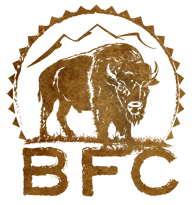For Immediate Release:
February 5, 2003
Contacts:
Ted Fellman, Mike Mease (406) 646-0070
West Yellowstone, Montana - Montana Department of Livestock (DOL) agents captured one bull bison this morning. Bull bison are considered to pose a "low risk" of brucellosis transmission by the US Animal and Plant Health Inspection Service (APHIS). A ranger from Yellowstone National Park and game wardens with the Montana Department of Fish, Wildlife and Parks assisted the DOL agents. The DOL did not return calls inquiring whether the buffalo would be sent to slaughter.
At least seven DOL agents on snowmobiles and horseback spent about an hour looking for the lone bull bison outside Yellowstone National Park. A moose was disturbed during the haze. Last week the DOL spent several hours hazing one bull bison, running it through a barbed wire fence at least four times, before it escaped capture.
"We have observed hay in and around their trap for the past few weeks. The hay lures the buffalo out of Yellowstone and across a hundred yards of private land to the trap," said Mike Mease, a Buffalo Field Campaign (BFC) coordinator. There are no cattle present during the winter when the DOL continue to haze, capture, and kill wild buffalo. The Yellowstone bison traditionally use the area for winter forage.
"The DOL continues to waste tax dollars with their weekly hazing, capture, and killing operations at a time when Montana is experiencing a budget deficit. Couldn't this money be better spent on education or social programs instead of funding a weekly buffalo haze?" asked Ted Fellman, a BFC coordinator.
The Department of Livestock has spent nearly $3.5 million since 1996 on bison management operations that have killed 1,827 wild bison. The Yellowstone herd is the only continuously wild herd in the United States. It is descended from just 23 wild bison that survived the mass eradication of the 19th century and is the largest single population of genetically pure bison remaining.
The Buffalo Field Campaign is the only group working in the field, everyday, to stop the slaughter of Yellowstone's wild buffalo. Volunteers defend the buffalo on their traditional winter habitat and advocate for their protection. Daily patrols stand with the buffalo on the ground they choose to be on and document every move made against them.
Video footage is available upon request.







